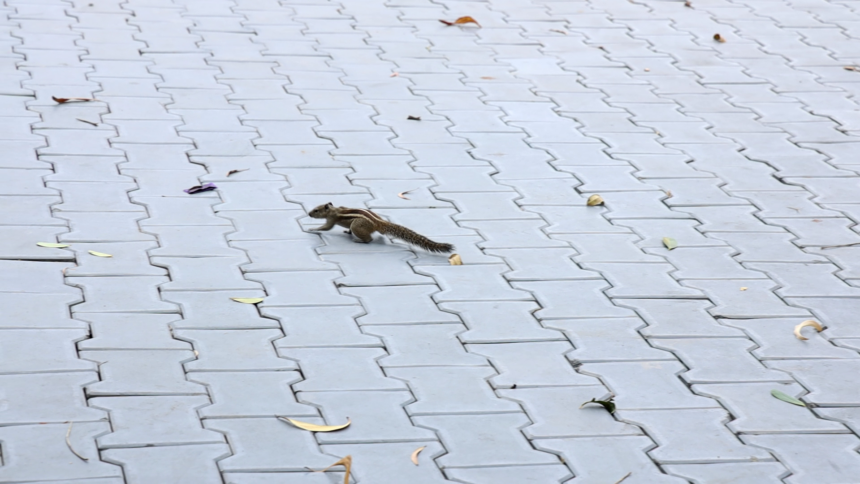All humans must be very adaptable in order to survive in India amid ongoing climate change. If that’s the case with humans, it’s no wonder that calm and helpless creatures like squirrels survive in this ferocious city! They are highly adaptable and vocal mammals that are reluctant to share their habitat with other animals. However, they seem to especially dislike cats and snakes, and can climb straight into their cotton-filled nests.
These rodents are not as helpless as they are portrayed in cartoons. At school, we get greeted by their “click, click” of tearing their tails every day. The Indian Palm Squirrel or the three striped pam squirrel is a rodent belonging to the Sciuridae family. They are native to India and Sri Lanka. This rodent is considered a pest in Madagascar, Réunion, Mayotte, Comoro Islands, Mauritius, Australia and Seychelles where they were introduced in the late 19th century.
Squirrel numbers have increased in recent decades due to simple nesting sites such as electric meters and air conditioning boxes, holes in trees, dilapidated cars, broken pipes that can create cozy bedrooms and nesting sites. However, jamun, jackfruit, mango, bell, and Indian almond grown together with red silk-cotton or kapok trees make a perfect nursery for squirrels.
The peninsular Indian palm squirrel is head to tail, in contrast to his five-striped palm squirrel, his north Indian cousin whose range overlaps in the Mumbai region. There are three buff-white stripes on him that run down to the base of the tail. Known to prefer fruit, seeds, and even food cooked by humans, the Indian palm squirrel raids nests of sparrows, myna, and parakeets. Like their rodent companions, these brave creatures climb slippery pipes, crash through high-rise apartment windows, steal ripe bananas and chicks, and secretly nest in attics.
Watch squirrels use their furry tails to balance on telephones and power lines and navigate to their destinations. This is possible because of the partially opposed toes on their front feet and their natural habit of climbing and walking on weak climbers and vine roots in forested habitats. Positioned ears help wary of predators. However, children often find squirrel cubs lying on the ground as ruthless tree cutting under the guise of road widening and beautification is rampant.
Seeing two or more squirrels playing and guarding their territory is just plain hilarious. Jumping on a distant branch to avoid a suitor can cause it to miss the branch and fall to the ground. They usually bend their bodies slightly and wag their tails to become small parachutes and land safely on their feet. But then they frantically look around, as if to see if they aren’t laughing at their ridiculous fall! Confident of their own safety, they run to the nearest protective cover.
Do not try to pick up fallen squirrels. A severe bite can even break a finger from your hand. But if you do find an orphaned or injured squirrel puppy, try putting it in a shoe box first and then try hanging the box where the puppy was found. If possible, take your squirrel to a veterinarian for a basic examination and disinfection or leave it in a registered animal shelter and only if the doctor decides that the squirrel can be released into the wild. Let go
Remember that where these squirrels actually adventure is safe!








